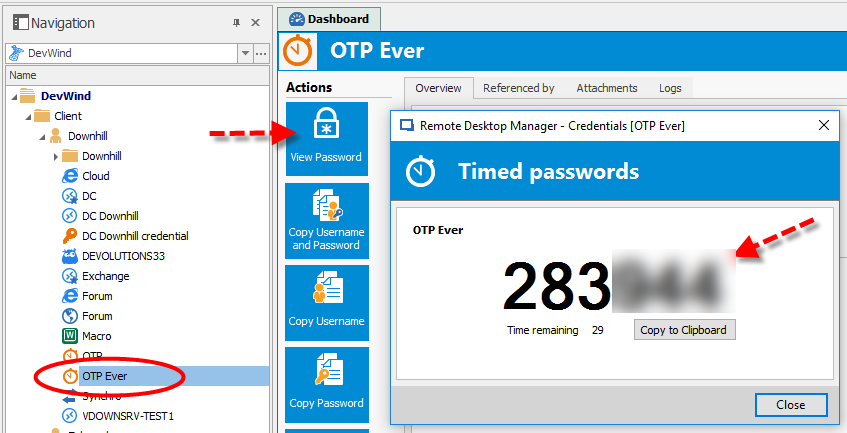
- #Otp application for windows registration#
- #Otp application for windows android#
- #Otp application for windows code#
- #Otp application for windows password#
- #Otp application for windows Offline#
Oraclemobileauthenticator://settings?LoginURL::=
#Otp application for windows code#
The QR code needs to be created from any of the following configuration URLs: The OMA scans the QR code which must have the shared secret, shared secret encoding information and optionally the OTP validity duration, the hashing algorithm to be used for TOTP or the length of the OTP (5 digits/6 digits).
#Otp application for windows Offline#
In the case of offline configuration, it is assumed that the customer develops a web application and a user is authenticated by said application. Table 33-2 contains details regarding the parameters. &AccountName::=&SharedSecretEncoding::=Base32/Base64String The format of the offline configuration URL is: oraclemobileauthenticator://settings?SharedSecretValue::= The secret key can also be delivered via an offline configuration URL so the administrator has the option of changing the OTP generation parameters (time step, hashing algorithm and the like). The user logs into this web application and, after authentication, the user is allowed to view the secret key and enter it in the OMA app manually. The Access Manager administrator sets up a web application which allows the user to generate or recreate a secret key. Offline Configuration supports use cases in which the mobile device can not connect to the REST end point or the parameters needed to generate the OTP are different than the defaults. Oracle recommends using online configuration. The OAuth scope required to access the shared secret. OAM OAuth service endpoint to get OAuth profiles available on the server. OAuth client ID if SharedSecretAuthServerType is set for OAuth
#Otp application for windows android#
The SenderID is only required on Android it is not required when using iOS. The Android sender ID for sending push notifications. The REST endpoint where push notification responses should be sent. The REST endpoint where push notification preferences should be sent. Currently only HTTP basic authentication is supported thus the value is HTTPBasicAuthentication.
#Otp application for windows registration#
The type of authentication by which notification registration endpoint is protected. The value specified for the LoginURL query parameter is based on the OAuth settings for Oracle Mobile Authenticator. The REST endpoint that provisions the shared secret for generating one-time passwords. Value can be HTTPBasicAuthentication or OAuthAuthentication. The type of authentication by which shared secret provisioning REST endpoint is protected. Value can be SharedSecret, Notification or Both.
#Otp application for windows password#
one-time password, notification or a hybrid service which combines both one-time password and notification. The type of service provided by this configuration i.e. If another configuration with same name is sent then it will prompt the user to overwrite the previous one Table 33-1 Location URL Parameter Definitions Parameter Table 33-1 documents definitions for the location URL parameters. &OAMOAuthServiceEndpoint::= &OAuthScope::= &PushPreferencesEndpoint::= &ChallengeAnswerEndpoint::= &SenderID::= &LoginURL::= &NotificationAuthServerType::= HTTPBasicAuthentication SharedSecretAuthServerType::=HTTPBasicAuthentication/OAuthAuthentication

&ServiceType::=SharedSecret/Notification/Both& Oraclemobileauthenticator://settings?ServiceName::= The format of the location URL is as follows. When the user taps on the web page's link (provided via e-mail), it launches the OMA, passes the location URL to the app and the REST web services location is configured. In this case, the Oracle Access Management administrator creates a web page to configure the OMA. To invoke the REST web services, OMA needs to know its location URL. Once enabled, the OMA app can invoke this service to get a secret key or register for push notifications. Online Configuration uses the REST web services and the Mobile OAuth Services described in Generating a Secret Key for the Oracle Mobile Authenticator and Configuring Oauth Services to enable the Secret Key API.

For details on the secret key, see Generating a Secret Key for the Oracle Mobile Authenticator.


 0 kommentar(er)
0 kommentar(er)
